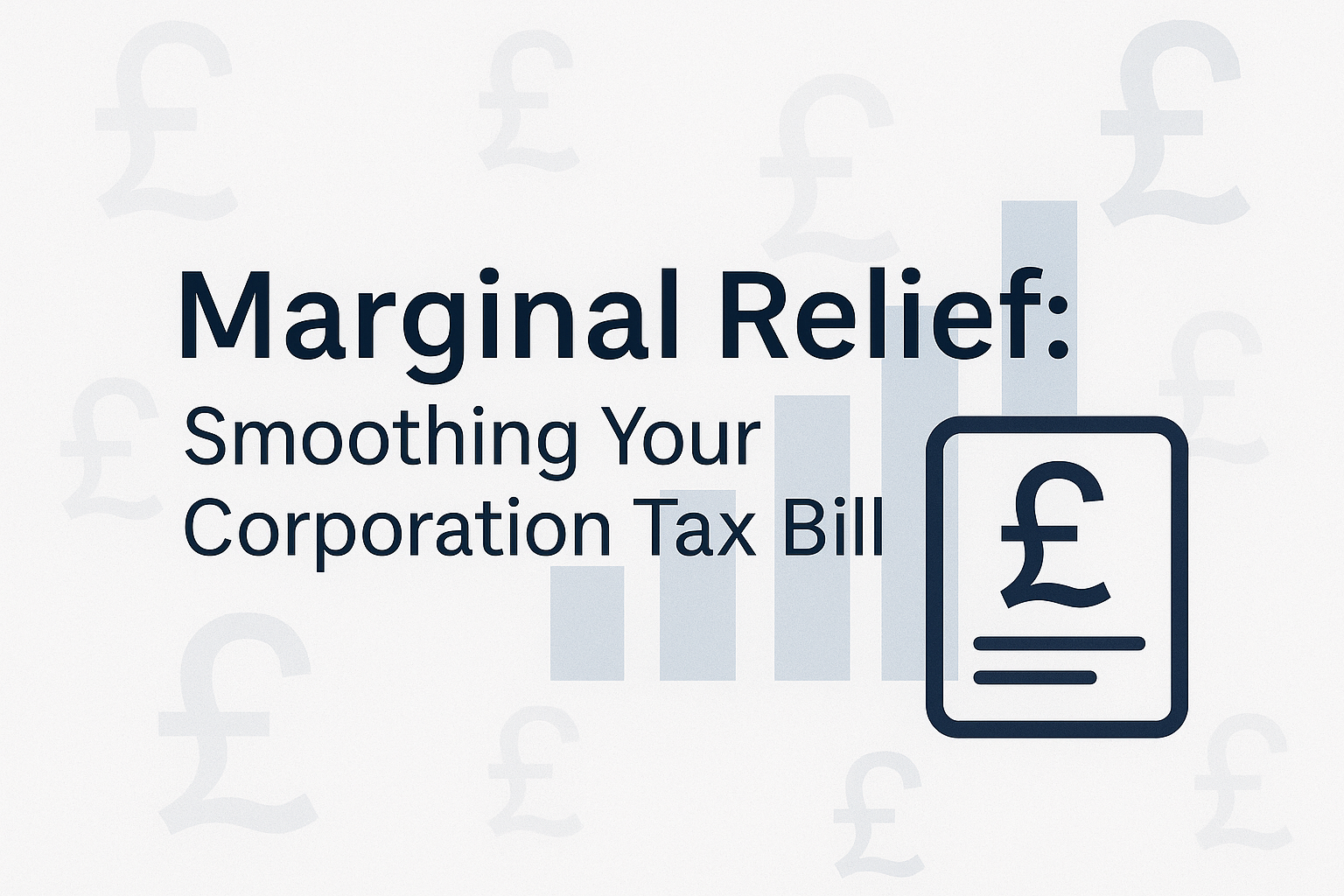Marginal Relief: Smoothing Your Corporation Tax Bill
Growing your business is exciting—but when profits exceed £50,000, your Corporation Tax rate jumps from 19% to 25%. Marginal Relief eases that leap, ensuring you only pay a gradually increasing rate on profits between the lower and upper thresholds.
1. Eligibility & Thresholds
- Who qualifies: UK-resident companies with taxable profits above £50,000 but below £250,000 in an accounting period.
- Why it matters: Without relief, every pound over £50,000 would attract the full 25% rate. Marginal Relief applies to the slice of profits in between, keeping your effective tax rate closer to 19%.
2. How It’s Calculated
- Basic formula:
(Upper limit – Profits) × 3/200
- What it means: The “3/200” fraction represents the 6% gap between the main and small profits rates. As profits rise from £50,000 to £250,000, relief steadily decreases until the full 25% rate applies at £250,000.
3. Adjustments for Connected Companies
- Connected company rule: If you have one or more connected or associated companies, divide both the £50,000 and £250,000 thresholds by the total number of connected companies + 1.
- Result: A narrower relief band, reflecting the combined strength of associated businesses.
Conclusion
Marginal Relief protects growing companies from abrupt tax increases, letting you invest more of your early profits back into the business. Always review your profit levels each year and use HMRC’s online calculator to determine the exact relief due.









